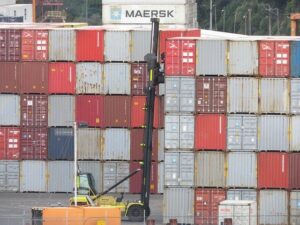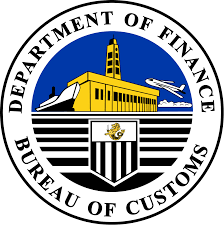
The Bureau of Customs (BOC) is establishing the Port Control Office (PCO) that will implement a modern risk management and profiling program to identify high-risk shipments likely to contain illicit goods.
Customs Memorandum Order (CMO) No. 19-2020, which took effect on September 1, contains guidelines for the creation of PCO, which will be responsible for implementing a container control program (CCP) on profiling high-risk containers. This is part of a memorandum of understanding (MOU) that BOC signed with the United Nations Office on Drugs and Crime (UNODC) and World Customs Organization (WCO).
The PCO is separate from the Customs Container Control Division of ports.
Developed jointly by the UNODC and WCO, the CCP aims to build capacity in countries seeking to improve their risk management, supply chain security, and trade facilitation capabilities in seaports, airports and land border crossings in order to prevent the cross-border movement of illicit goods.
At present, CCP is operational in over 55 member states with more than 115 PCOs and Air Cargo Control Units established since the program was conceived in 2004.
In 2017, BOC adopted the program and formally launched a container control unit (CCU), which will now be strengthened and called the PCO under CMO 19-2020.
READ: New BOC unit to identify suspicious containers at Manila port
The issuance of CMO 19-2020 is in time for implementation of new operational procedures and the roles of concerned customs offices and districts in implementing an enhanced cargo selectivity system, which is part of the BOC’s risk management tools.
CMO 19-2020 covers all containerized shipments, including unit load devices (ULDs) for air cargo, discharged at all ports of entry under the jurisdiction of BOC.
The PCO will consist of officers from BOC and other law enforcement agencies which may be deputized under the law. It will be supervised by the Intelligence Group (IG) deputy commissioner or other group as may be directed by the Customs commissioner.
The PCO team will undergo training under the CCP in modern risk management and profiling techniques in order to strengthen its capability to profile, identify, select, and examine high-risk containers likely to contain illicit goods. Containers subject to profiling will not be limited to imported shipments but may also include export, transit, and transshipment.
Profiling activities will focus on weapons of mass destruction, strategic trade goods, illegal drugs, precursor chemicals, intellectual property rights violations, and environmental or other non-fiscal violations such as those involving cultural properties, among others.
If the PCO determines the need for a physical examination of inbound, transshipment, or export shipments based on high-risk indicators, the importer, exporter, or their representative will have to be notified.
Overstaying shipments identified as high-risk will be immediately recommended for issuance of either an alert order or pre-lodgment control order.
PCO offices should perform regular inspection of the locks and seals of overstaying containers at container yards. PCO members should thus be given by the port operators full access to the subject shipment so they can physically inspect the locks and seals of both conventional and refrigerated containers.
BOC will shoulder expenses for non-intrusive inspection and/or physical examination of shipments covered by alert orders and pre-lodgment control orders covered by CMO 19-2020, subject to the provisions of Section 4.5 of Customs Administrative Order (CAO) No. 07-2019 and other related issuances.
CAO 07-2019 states BOC will bear the cost for the physical examination of goods, but this will have to be reimbursed by the owner of the shipment if the examination results in the assessment of additional duties and taxes, or the issuance of a warrant of seizure. – Roumina Pablo





